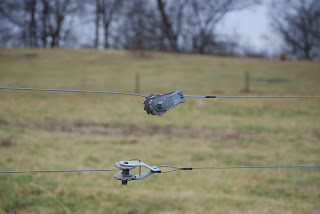 A few years ago a group of friends and I went on an early morning bush walk in one of South Africa’s private game reserves. It was the middle of winter, and after a fairly jolly evening the night before, it was with bleary eyes and pounding heads that we stumbled out of our tents before sunrise and followed our guide reluctantly into the chilly, frost-rimed bushveld.
A few years ago a group of friends and I went on an early morning bush walk in one of South Africa’s private game reserves. It was the middle of winter, and after a fairly jolly evening the night before, it was with bleary eyes and pounding heads that we stumbled out of our tents before sunrise and followed our guide reluctantly into the chilly, frost-rimed bushveld.
Just after sunrise, we were trudging along in single file, shivering and grumbling, when our guide suddenly held up his hand and signalled for us to stop.
About 50m (160ft) away, we could just see the head of a female giraffe sticking up above the thick bushes. Unusually for a giraffe – they normally behave more like statues and will stare at you, unmoving, for minutes at a time – she seemed agitated, marching backwards and forwards behind the bushes, never taking her eyes off us, but not coming any nearer or moving away.
Our guide was peering around underneath the bushes much closer to us, obviously looking for something. He spotted what he was looking for and beckoned us to come closer and keep dead quiet.
And there, almost invisible under a thick green bush, lay a baby giraffe, probably only a day or two old. Its head was bent back and resting on its hindquarters and its legs tucked in underneath it, making it look even smaller. It reminded me of a heap of spotted rags dropped willy-nilly on top of one another.
We gazed at it in awe for a minute or so, during which time it didn’t move a muscle, before the guide drew us away.
Once out of earshot, he told us that the baby giraffe was very likely hiding from us, instinctively curling itself up into the smallest possible ball, while the mother, very much aware of where her baby was, was trying in her own way to distract us.
Whether the reasons he gave us for this behaviour were accurate or not, it was nevertheless a breathtaking experience for all of us. With the adrenaline pumping, our headaches evaporated into the morning mist and we returned to camp exhilarated, babbling to each other about what we’d seen and thought, and completely re-energised by such a rare sighting of one of the wonders of nature.
Visit the Earth-Touch crew’s latest footage from the Okavango Delta in Botswana and watch a herd of giraffe in Giraffe encounter, behaving in the way they normally do, quiet and statuesque as they stroll across the open plain and disappear into the treeline.
– By Reina Luck, editorial team
Image © Earth-Touch 2007
 As the wind blows and the cold, stormy weather moves in, Hartlaub’s gulls are seen on the coastline at Walker Bay, Western Cape, South Africa, in the Earth-Touch clip, Wind howls in from the Atlantic.
As the wind blows and the cold, stormy weather moves in, Hartlaub’s gulls are seen on the coastline at Walker Bay, Western Cape, South Africa, in the Earth-Touch clip, Wind howls in from the Atlantic.















































